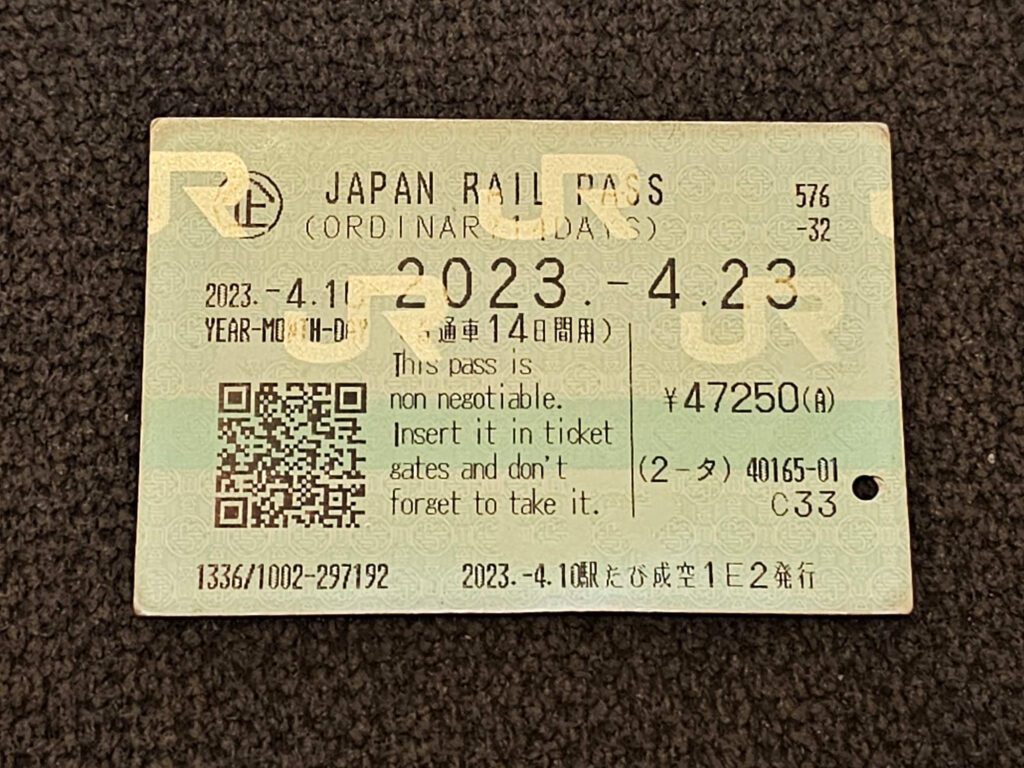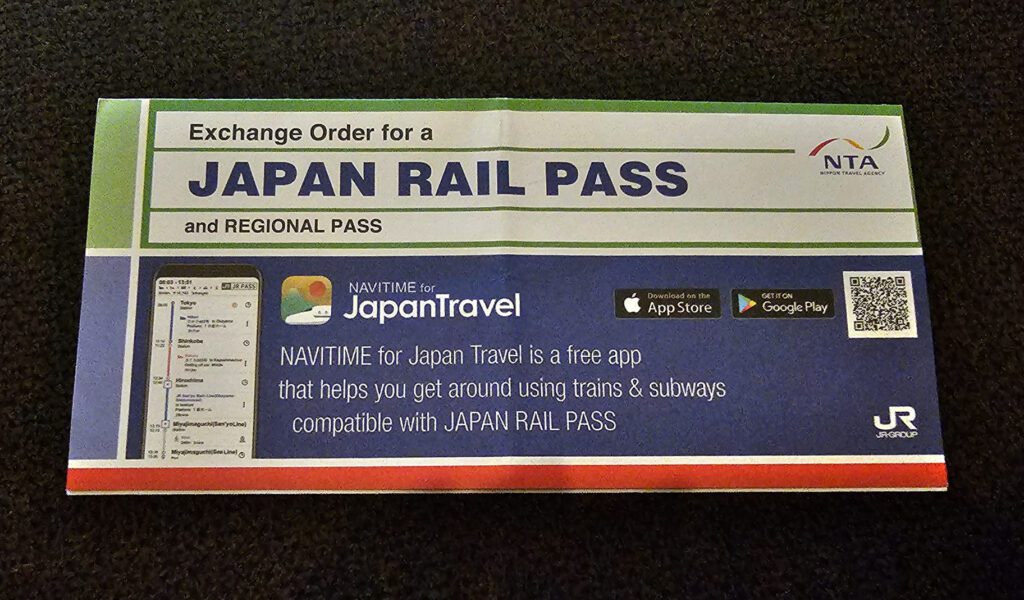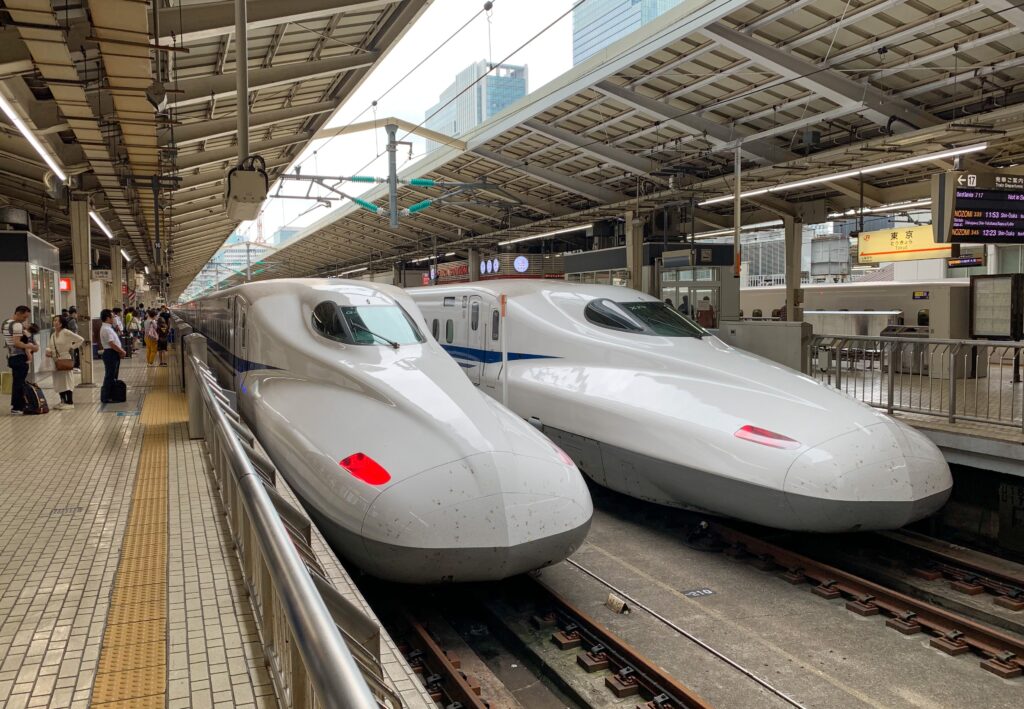If you’re plotting a journey to the land of the rising sun, you might be pondering the best way to navigate its vast transport networks. This is where the Japan Rail Pass steps in, a ticket that unlocks a world of endless travel opportunities. In this article, we’ll walk you through all you need to understand about the Japan Rail Pass, from its functionality to how to maximise its benefits. Prepare to embark on a memorable exploration of Japan’s allure, with the freedom and convenience that only the Japan Rail Pass can provide.
Who is eligible for the JR Pass?
The JR Pass is tailored for foreign tourists visiting Japan for leisure. To qualify, you must enter the country on a “Temporary Visitor” visa (typically valid for 90 days). Japanese residents living overseas (for more than 10 years) may also qualify if they possess a Japanese passport and evidence of foreign residency, such as a valid overseas residence card.
Please be aware that the JR Pass is personal and cannot be transferred.
Types and prices of the JR Pass
There are various types of JR Passes, differing in duration and seating class. Passes can be purchased for 7, 14 or 21 consecutive days and in ordinary or Green Car (first class) seating. Prices fluctuate based on duration and class, but generally, a 7-day JR Pass in ordinary class is around 29,650 yen, while a 21-day pass in Green Car is approximately 81,870 yen. The Green Car class provides larger, more comfortable seating, as well as additional services like complimentary drinks and snacks on certain trains.
Here is a table of Japan Rail Pass types and their estimated prices. Please note that prices may vary depending on currency and country of purchase. Also, these prices are for reference only and it is recommended to check the current prices at the time of purchasing the JR Pass.
| Type of JR Pass | Duration | Class | Approximate Price (in Euros) | Approximate Price (in Dollars) | Approximate Price (in Pounds) |
| Ordinary JR Pass | 7 days | Standard | €240 – €260 | $290 – $315 | £205 – £225 |
| Ordinary JR Pass | 14 days | Standard | €390 – €420 | $470 – $505 | £335 – £360 |
| Ordinary JR Pass | 21 days | Standard | €500 – €540 | $600 – $650 | £430 – £465 |
| Green JR Pass | 7 days | First Class | €320 – €350 | $385 – $420 | £275 – £300 |
| Green JR Pass | 14 days | First Class | €510 – €550 | $615 – $660 | £440 – £475 |
| Green JR Pass | 21 days | First Class | €650 – €700 | $780 – $840 | £560 – £600 |
| JR Pass for Children | 7, 14, or 21 days | Standard | 50% discount | 50% discount | 50% discount |
| Regional JR Pass | Various periods | Standard | Varies by region | Varies by region | Varies by region |
| Regional JR Pass | Various periods | First Class | Varies by region | Varies by region | Varies by region |
It’s crucial to note that the JR Pass is available in two classes: Ordinary (second class) and Green (first class). The Green class provides larger, more comfortable seating, as well as a quieter atmosphere.
Additionally, there are regional JR Passes available for specific areas of Japan, such as Kansai, Hokkaido, and Kyushu. These regional passes have specific durations and prices depending on the region selected.
Please note that the above prices are approximate and may vary. It is recommended to check the current prices and purchase the JR Pass from designated travel agencies or authorised resellers.
NOTE: Starting October 2023, JR Pass prices will increase considerably (more than half). We will update the price table shortly.

Where can you purchase the JR Pass?
The JR Pass should be purchased prior to your arrival in Japan. It can be bought online via authorised websites or travel agencies in your home country. You will receive an “Exchange Order” which must be redeemed for the JR Pass once you arrive in Japan.
In the past few years, buying the JR Pass within Japan has become an option, with availability at most airports and certain train stations. However, we strongly discourage this approach due to its higher cost, which is approximately 5,000 yen more expensive compared to purchasing it in your country of residence.
Based on our personal experience, we consistently opt to buy the JR Pass online via Japan Experience. They provide complimentary delivery and a range of additional products and services, allowing you to conveniently bundle your JR Pass with items like the Suica card and a data SIM card. This comprehensive approach ensures a seamless travel experience within Japan.
When should you purchase the JR Pass?
Our suggestion is to purchase the Japan Rail Pass approximately a month prior to your scheduled trip to Japan. However, it is important not to be overly cautious, as the exchange order has a validity period of three months. Therefore, it is advisable to consider this timeframe while planning your travel arrangements. There is no need to make the purchase excessively early; obtaining it a month before your intended departure should suffice.
Aquí tienes una respuesta detallada sobre cuánta antelación se debe adquirir el JR Pass:
- Delivery timeframe: When purchasing the JR Pass online, it is typically dispatched to your home address before your departure. The delivery duration may vary depending on your country and the supplier, so it is recommended to make the purchase well in advance to ensure timely arrival. Delivery can take anywhere from 2 to 5 business days or potentially longer, depending on your location and the available courier services.
- Activation process: It’s important to note that the JR Pass does not start counting the days from the moment of purchase, but rather from the time it is activated in Japan. Therefore, there is no need to delay the purchase until the last minute. However, keep in mind that once you activate the pass, it starts the countdown of consecutive days based on your selected duration (7, 14, or 21 days). Hence, it is crucial to calculate the length of your stay in Japan and ensure that the pass is activated accordingly.
- Planning your itinerary: It is advisable to have a rough outline of your travel itinerary in Japan before purchasing the JR Pass. This will assist you in determining the appropriate duration of the pass and identifying the days when you will utilize it most extensively. Having a planned itinerary enables you to maximize the benefits of the pass and make advance reservations for Shinkansen trains and other covered services.
- Peak season and availability: During peak periods such as the spring holidays (Sakura), Golden Week in May, and summer vacations, popular services including seats on Shinkansen trains can quickly reach full capacity. If you intend to travel during these busy seasons, it is advisable to purchase the JR Pass well in advance to ensure availability and secure your seat reservations.
In short, it’s recommended to buy the JR Pass at least several weeks before your trip. This timeframe allows for ample delivery time, enables you to plan your itinerary, and provides the opportunity to make advance reservations as needed. However, it is important to consider delivery times and availability, especially during peak seasons. It is always recommended to check the most recent information regarding lead times and availability when making your purchase.
Should you consider purchasing the JR Pass?
Whether or not it is worth purchasing the JR Pass depends on your specific travel itinerary. If you intend to visit multiple cities and make extensive use of high-speed trains like the Shinkansen, the JR Pass can provide substantial cost savings.
For instance, a round-trip journey on the Shinkansen between Tokyo and Kyoto can cost around 28,000 yen, which nearly covers the expense of a 7-day JR Pass.
However, if your plans involve staying primarily within a single city or relying mostly on local transportation, the JR Pass may not offer the most economical solution for your travel needs.
How to redeem the JR Pass?
To exchange and activate the Japan Rail Pass in Japan, adhere to the following instructions:
- Locate a JR Pass exchange office: JR Pass exchange offices are located at major international airports in Japan and at several major train stations. Some well-known stations with exchange offices are Tokyo Station, Shinjuku Station in Tokyo, and Kyoto Station.
- Fill in the application form: Upon arrival at the JR Pass exchange office, you will receive an application form. Fill in the required information, such as your name, passport number, desired activation date, and type of JR Pass you have.
- Present your passport and exchange order: Provide your unexpired passport, together with the JR Pass exchange order you received upon purchase, ensuring that the name on the exchange order precisely matches the name on your passport.
- Choose the activation date: On the application form, you will be asked to select the date you would like your JR Pass to be activated. This will be the date from which you will be able to start using it to travel on JR network trains.
- Receive your JR Pass: After completing the form and submitting your documents, the exchange office staff will verify the information and give you the physical JR Pass. Be sure to check the details on the pass, such as the activation date and the duration of the pass.
JR offices are available at Haneda, Narita, and Kansai airports where you can redeem your Exchange Order for the JR Pass. Remember to bring both your passport and Exchange Order with you for the exchange process. Here are the locations and operating hours of these offices at each respective airport:
- Haneda Airport: JR East Travel Service Center Office, International Terminal, 2F. Open from 7:45 am to 6:30 pm.
- Narita Airport: JR East Travel Service Center offices in Terminals 1 and 2. Open from 8:15 a.m. to 7:00 p.m.
- Kansai Airport: JR West Kansai Airport Station Office, 2F. Open from 5:30 to 23:00.

Where can you use the JR Pass?
The JR Pass is accepted on a wide range of trains operated by the Japan Railways Group, including Shinkansen (excluding Nozomi and Mizuho trains), local trains and certain buses and ferries. Additionally, the JR Pass can be used on the Tokyo Monorail, as well as JR local buses in Hiroshima and Hokkaido. It’s essential to keep in mind that the JR Pass does not provide coverage for any subways in Japan.
Here is detailed information on the different types of services covered by the JR Pass:
Shinkansen (high-speed trains)
The JR Pass allows you to travel on the famous Shinkansen bullet trains of the JR network. There are different types of Shinkansen, including the Tokaido Shinkansen (connecting Tokyo to Osaka), the Hokkaido Shinkansen, the Tohoku Shinkansen, the Akita Shinkansen, the Yamagata Shinkansen, the Joetsu Shinkansen, the Hokuriku Shinkansen, the Kyushu Shinkansen, and the Sanyo Shinkansen. You can make unlimited use of these high-speed trains covered by the JR Pass.
Example: If you wish to travel from Tokyo to Kyoto, you can take the Tokaido Shinkansen, one of the most popular and fastest bullet trains in Japan. The cost of the ticket would be covered by the JR Pass.
Local and express trains
The JR Pass is also valid on most local and express trains in the JR network. These trains connect metropolitan areas, cities, and smaller towns throughout Japan. You can use them to explore various regions of the country.
Example: If you wish to visit the famous Fushimi Inari Temple in Kyoto from Kyoto Station, you can take a local train on the JR Nara Line to Inari Station. The cost of the ticket will be covered by the JR Pass.
Narita Express (N’EX)
When using the JR Pass, you can travel on the Narita Express at no additional cost. This means that you do not need to buy an additional ticket for the journey from the airport to Tokyo if you have a valid JR Pass.
The Narita Express offers regular and fast services, with stops at several major Tokyo stations, such as Shinagawa, Shibuya, Shinjuku, and Tokyo. The trains are modern and comfortable, and offer reserved and non-reserved seating. If you plan to use the Narita Express to get to Tokyo from the airport, be sure to take advantage of this benefit included with your JR Pass!

JR Ferries
The JR Pass is applicable on specific ferry routes, allowing you to conveniently explore nearby islands or enjoy picturesque water journeys. This feature proves particularly beneficial if you intend to visit neighboring islands or embark on scenic sea voyages.
Example: If you wish to visit Miyajima Island near Hiroshima, you can take a JR ferry from Miyajimaguchi Pier to the island. The cost of the ferry would be covered by the JR Pass.
The JR Pass generally does not cover regular buses in Japan. However, there are some exceptions where the JR Pass can be used on specific bus services:
JR Buses
The JR Pass includes coverage for certain bus routes operated by JR. These buses serve as a transportation link to areas where JR train services are not available, offering additional mobility options for travelers.
Example: In the Tohoku region, the JR Pass allows you to utilize JR Bus Tohoku services. These buses conveniently connect rural areas and popular tourist destinations within the region, providing an extensive transportation network for JR Pass holders.
Station shuttle buses
Certain train stations, particularly those situated in mountainous and rural regions, offer station shuttle bus services that are eligible for JR Pass coverage. These buses serve as a convenient link between train stations and popular nearby destinations, enhancing accessibility and facilitating seamless travel experiences for JR Pass holders.
Example: Within the Japanese Alps region, such as Nagano Station, the JR Pass can be utilized for the shuttle bus service that transports travelers to Snow Monkey Park Bus Station. This particular bus route offers access to the renowned hot springs and the fascinating snow monkeys, providing an exciting opportunity for JR Pass holders to explore these popular attractions.
Please take note that, as a general rule, the JR Pass does not encompass standard city buses within urban areas, including municipal and transit buses. Additional fares are typically required for bus travel within cities.
It is advisable to check the specific transportation options available in the areas you intend to visit, as the coverage of the JR Pass on buses may vary depending on the region and bus service. Before your trip, consult comprehensive guides and updated information regarding the utilization of the JR Pass on buses to ensure a smooth travel experience.
Updates
Shinkansen Baggage Restrictions
As of 2020, passengers travelling on the Shinkansen are required to make advance reservations for accommodating large luggage, which typically falls within the overall dimensions of 160 to 250 cm. The reservation fee for luggage is complimentary and is included within the seat reservation. It is crucial to reserve space for your large luggage to avoid any inconvenience. Failure to reserve adequate space may result in a penalty fee of 1,000 yen.
Also bear in mind that train luggage compartments often have limited space, so it is advisable to only carry essential luggage. If you wish to avoid the inconvenience of carrying bulky luggage during your journey and prefer a more relaxed approach, consider reading our post on the Takkyubin service. This convenient service enables you to directly ship your belongings to your desired destination, alleviating the burden of carrying them throughout your travels.

JR Pass Price Increase
Starting from October 2023, there will be a significant price hike of 68.5% for the 7-day JR Pass.
This increase is likely to impact the popularity of the JR Pass, although it will continue to offer advantages for travelers planning multiple train journeys within a short timeframe and seeking to optimize their time in Japan.
In light of these changes, regional passes like the Hokuriku Arch Pass and the JR West All Area Pass are expected to gain more popularity, assuming their current prices remain unchanged. Furthermore, competition with domestic flights is expected to intensify, especially for travel to Kyushu, Shikoku, and Hokkaido, where train tickets will lose their price advantage.
Considering these factors, if you have plans to visit Japan this year, it is advisable to take advantage of the opportunity to purchase your Japan Rail Pass while it is still available at a reasonable price. Remember that you have a window of up to 3 months to redeem the pass, allowing you to still enjoy its benefits throughout 2023.
We hope this additional information provides you with a better understanding of the Japan Rail Pass and how to make the most of it during your upcoming trip to Japan. 😊.



